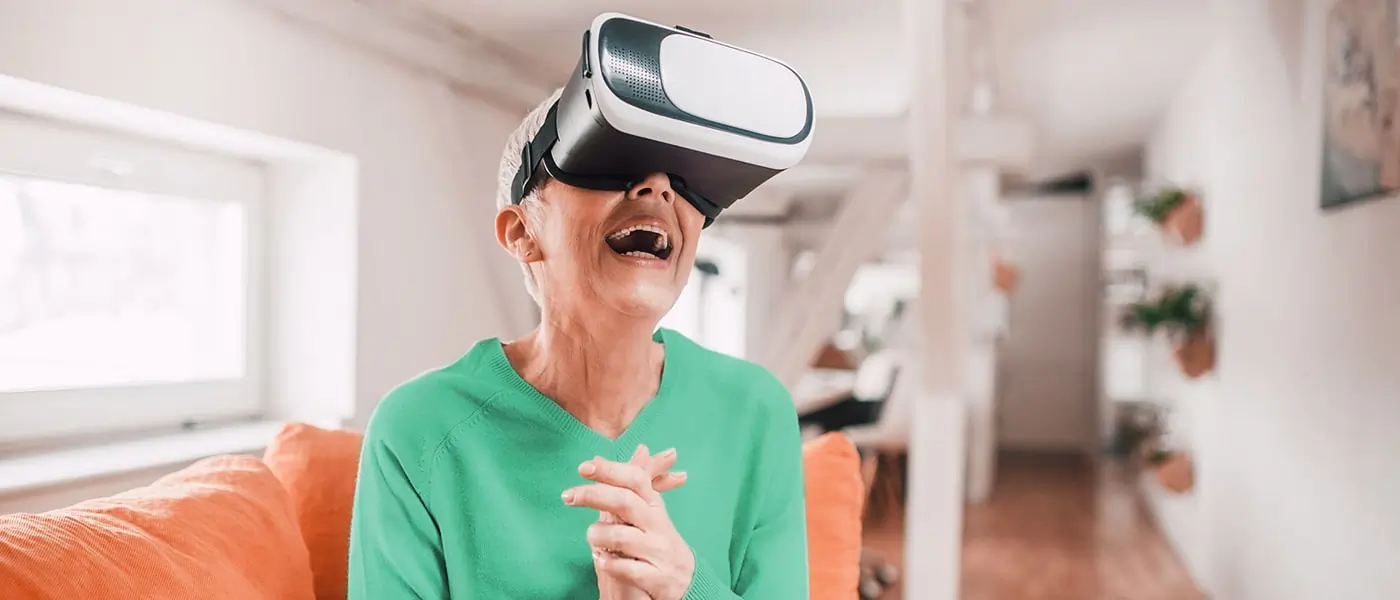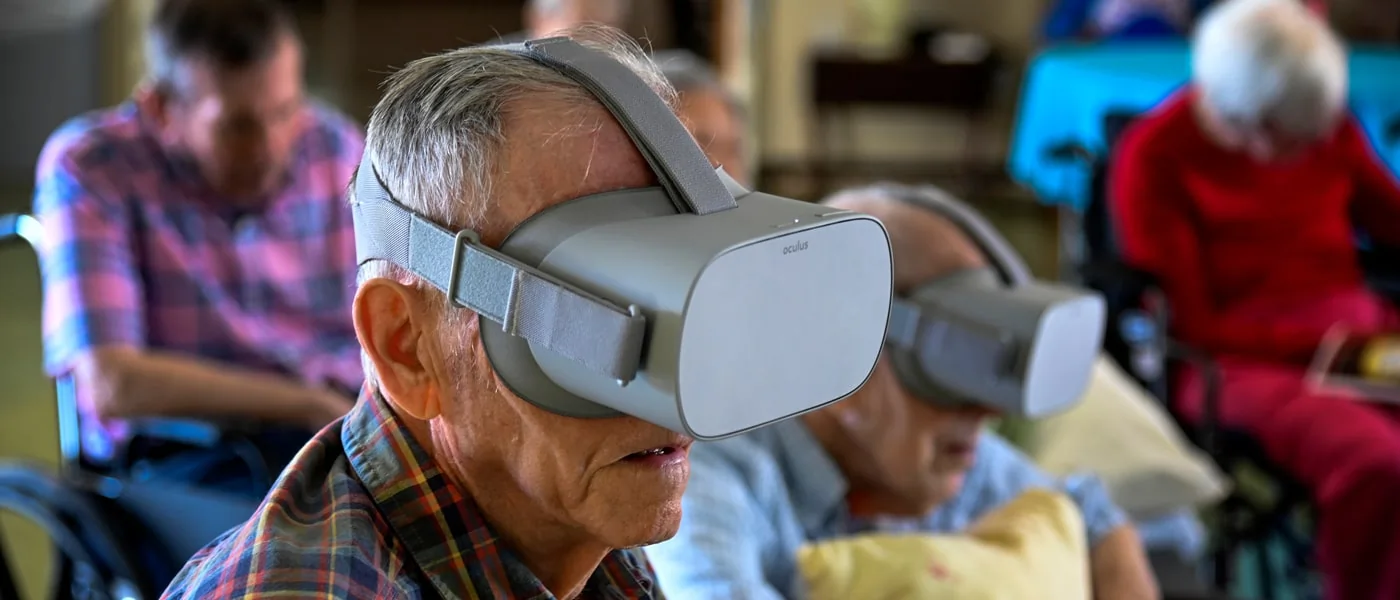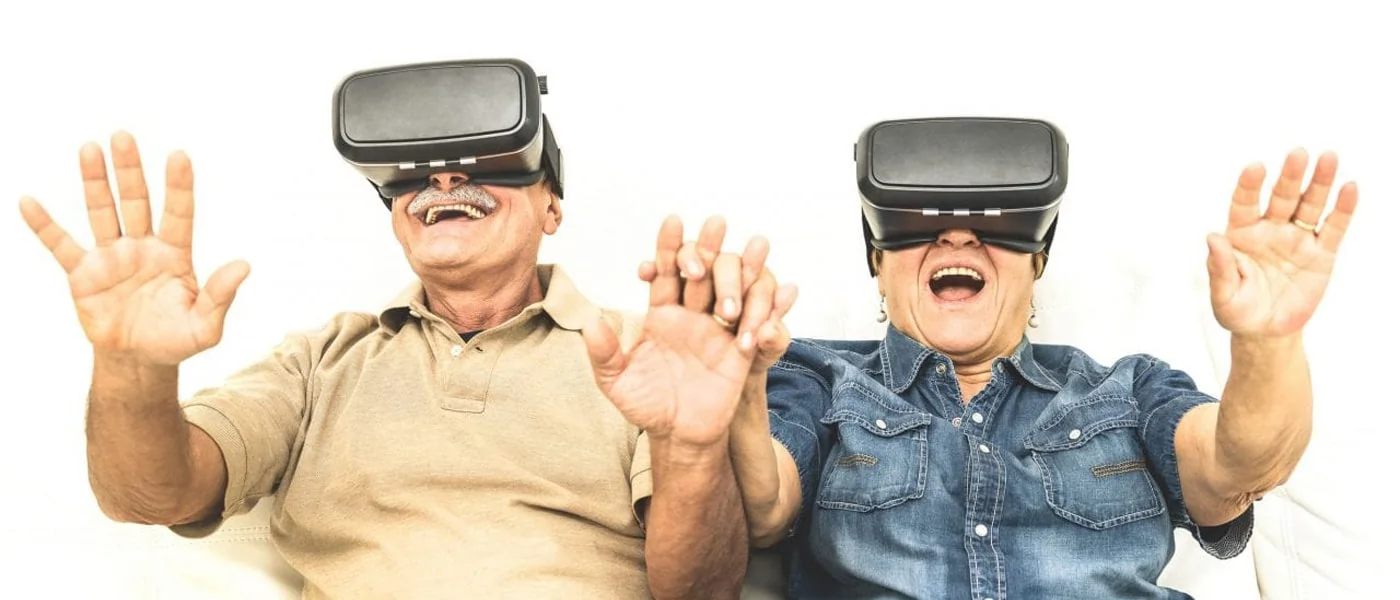In a world dominated by diverse digital technologies, VR for the elderly has emerged to boost the quality of our seniors’ lifestyles. Today, there are many virtual reality possibilities to help those with aging difficulties enjoy a happier and healthier life. With VR tools, loneliness is no longer a grave concern for our old beloved ones. They will have a marvelous opportunity to socialize and interact with peers and counselors, go on group adventures, learn from various resources, and enjoy many other benefits.
However, developing a VR tool that properly suits the specific needs of the elderly is a tough challenge. VR developers need to mull over several issues in each stage of the development process. This post will cover some of the most crucial potentials and challenges of developing VR for the elderly.
The Potentials of VR for the Elderly
VR technology has significantly proved to be a marvel during COVID-19 lockdown mandates. It has helped millions of people worldwide from various age groups with a wealth of interactive games, social communication, and physical activities. Although VR tools have not gained much popularity among seniors aged 65 and over yet, they can contribute significantly to their lives in many ways. Such incredible potentials are here to help seniors enjoy a happier, healthier, and more productive life while lifting heavy burdens from their families’ shoulders. Here is an overview of the most promising ones:
Real-world Perception
Virtual reality can significantly enable the elderly to navigate their ways through various environments. For instance, they can use VR for travel and tourism purposes or use it in navigating simulated cyberspace, either in animated or realistic worlds. This technology can help seniors with memory, or cognitive problems travel through unfamiliar spaces by directly providing information about a town or street on their VR headsets or smartphones.
Education & Training
VR technology is dramatically transforming learning methods all over the globe. VR can impressively enrich intergenerational learning experiences in late-life education by focusing smartly on personal interests and social collaboration. Extensive research reveals that senior citizens are as keen on education as younger adults, but their learning pace differs depending on their life experiences. That is why learning for seniors must be structured differently from youth education. Luckily, VR tech can consciously detach learning from physical spaces, set up new interactive systems through VR-based lesson plans, and incorporate gamification features.
Health & Wellbeing
Health and wellbeing are of crucial importance for most senior citizens. Many need psychotherapy and rehabilitation services, particularly in long-term care facilities. That is where the VR tech magically emerges to effect a change. It can support seniors’ motor capabilities, fitness, balance, cognition, and memory. Hopefully, we can utilize VR applications effectively to enhance physical and cognitive functions, particularly in seniors with minor cognitive and mental losses. VR provides a golden opportunity for caregivers to mitigate the progress of dementia and its after-effects for old-age patients. For instance, high-tech Reminiscence Therapy can help seniors with memory impairments look at old photos, examine once-familiar objects, or listen to nostalgic music to challenge their minds and lighten their moods.
Socialization & Interaction
Loneliness is unquestionably a death threat to most seniors, particularly those subject to dementia and Alzheimer’s. Such seniors gradually lose touch with society and wither mentally in isolation. However, virtual reality can be a savior here. It can motivate the elderly to find peers and socialize with them regularly. It can also foster new modes of social interaction, including those with avatars or embodied agents. AI/ML can also help form long-lasting relationships with seniors who need a confidant to expose their feelings.
Amusement & Fun
Entertainment may be the core value of VR for the elderly as it boosts other potentials. VR keeps seniors fully engaged, excited, and enthusiastic and all this contributes massively to health, education, and cognitive purposes. VR is not merely for gamers to fight monsters or demons in mythical worlds; it can give the elderly a great chance to live through the sights and sounds of far-flung places together with their peers. They can enjoy doing activities that they can never experience in real life due to old age or poor health. For instance, they can form an intimate group of seniors to take a 3-day adventure tour to the Amazon rainforest and try some extreme sports altogether. Also, those with a keen eye for modern arts can relish the latest exhibition in MoMA.
The Challenges of Developing VR for the Elderly
The digital gap between the youth and elderly might ward off some seniors from benefiting from VR technologies in their daily lives. Although many older adults have embraced innovative technologies like VR to boost their social life, particularly during the COVID-19 pandemic, a large number still feel socially neglected owing to their lack of essential digital skills and devices.
For instance, a study across 17 European countries revealed that nearly half of seniors aged 50 and over did not use the internet. Several personal factors, including education, health, income, and prior experience with IT, affect internet use among older adults. Besides, as people grow older, they are more susceptible to cognitive, sensory, and mobility limitations. That is even more noticeable among elders in long-term care facilities, who generally have several health conditions and limited financial resources.
These specific age-related factors make VR development for seniors a demanding task, which requires extensive prior research. Here are the main challenges faced by the development team:
Attitudes & Approaches
Senior citizens are generally accustomed to performing daily tasks in non-digital manners. Besides, they are heterogeneous in terms of their attitudes toward new technologies. That is why VR developers should consider seniors’ requirements and skill levels while crafting a new VR tool. These technical solutions must add value to their current lifestyles and facilitate their everyday activities compared to offline methods. A fundamental paradigm shift is a first and foremost challenge VR developers need to face in their innovative process.
Diverse Abilities
Senior citizens vary significantly regarding their physical and cognitive limitations. For example, not all seniors suffer from mobility restraints or visual and hearing impairments, particularly in the 65-80 age range. Thus, VR developers need to target different segments with various tools or sceneries. They must conceive acoustically or visually challenging features or respect their current aids to target seniors with hearing or visual losses. For instance, they should design VR systems that do not interfere with elders’ hearing aids. Or some seniors with dementia may be deceived and hallucinated if they are presented to virtual worlds as excessively real. VR designers must think through all these physical and cognitive limitations while going through their R&D process.
Cybersickness
Just like the real world, seniors might suffer cybersickness with symptoms like headaches, nausea, and motion sickness. For instance, elders report cybersickness more often than youngsters in car racing simulators. Hence, they might be similarly more inflicted by cybersickness in VR worlds.
Care Conditions
Not all older adults live on their own. Many are permanently looked after by their family members or in long-term care facilities. While creating a VR application for elders, developers must dig into the particular conditions of the environments where they reside. They should consider care staff requirements and the institutional infrastructure in the VR development process. For instance, is high-speed internet accessible in all care facilities? Or are all the care staff digitally literate to train the elders they care for?
Revolutionize the Elderly’s Lives with VR
Virtual reality opens up incredible opportunities to better the elderly’s lives. Not only does it benefit them, but it also positively affects their family, relatives, and professional caregivers. With VR tools, seniors have a golden chance to socialize together, take new adventures, and learn passionately from many resources. These unique facilities allow them to feel happier and live more healthily in their years of infirmity.
However, developing VR for the elderly is not as easy as it is for young adults. It takes several challenges and needs efforts to craft something tailored to their specific needs. Researchers, designers, developers, and practitioners must concede digital disparities and provide seniors with digital solutions that reflect their varied needs and conditions.
Can you add any other points to the potentials or challenges of VR for the elderly? Please share your thoughts with us in the comments below.







